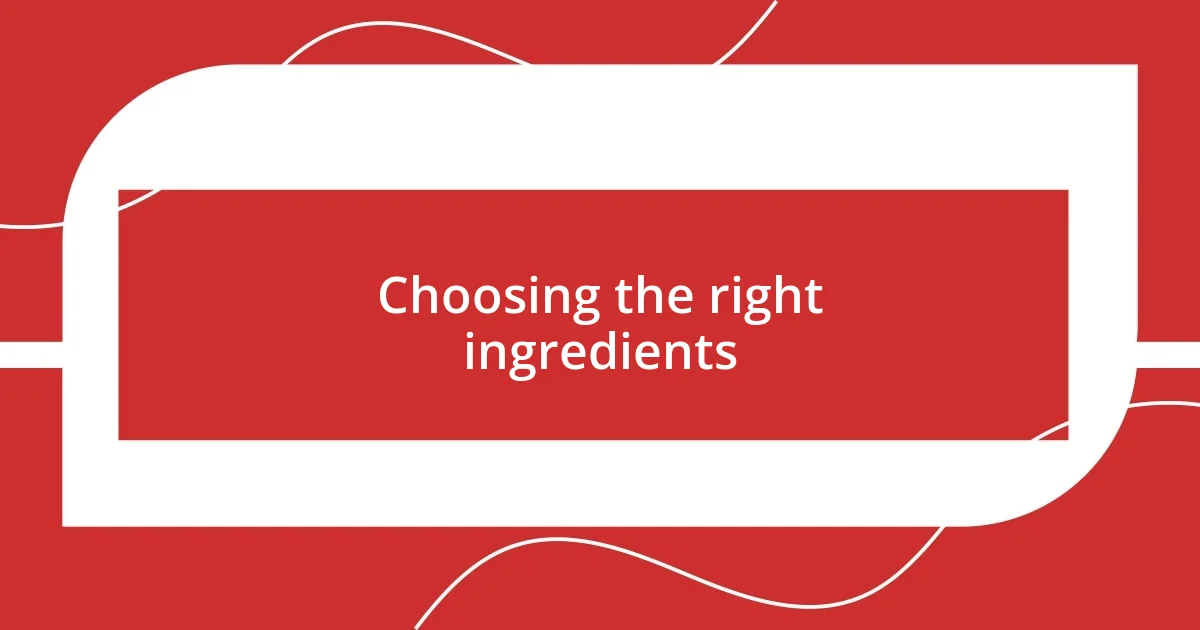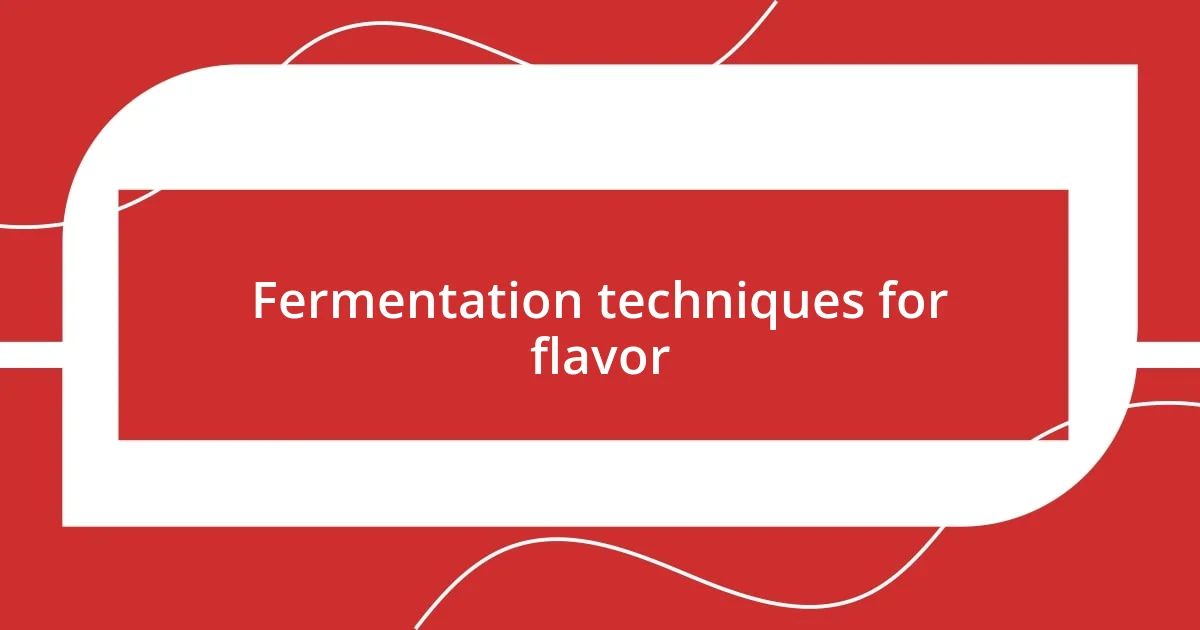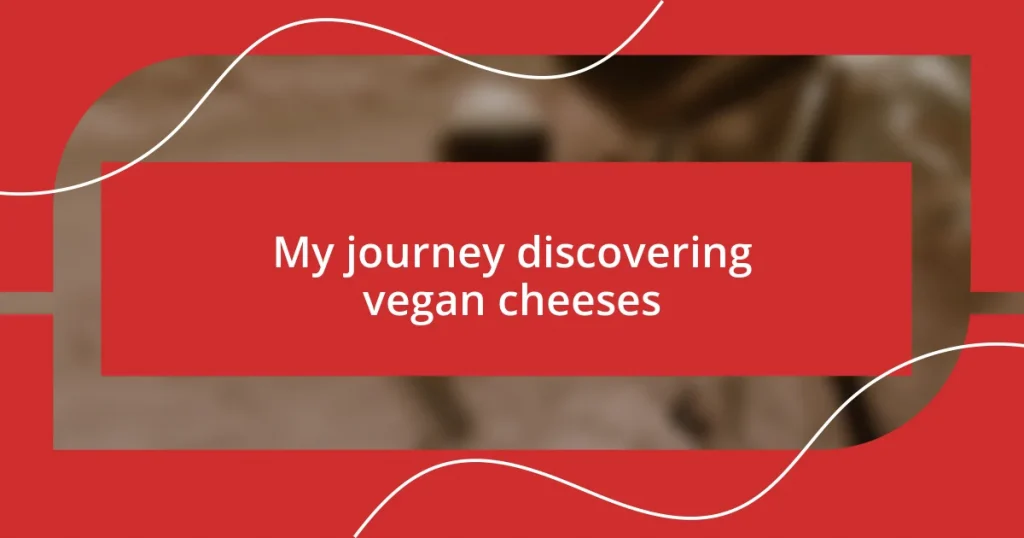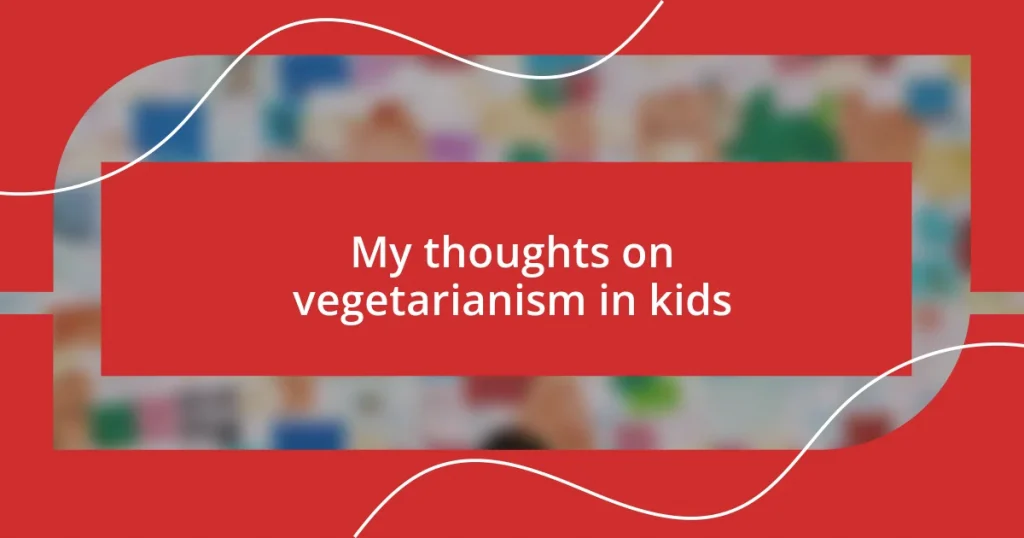Key takeaways:
- Vegan cheeses vary in ingredients, with popular types including cashew, almond, and fermented cheeses, each offering unique flavors and textures.
- Homemade vegan cheese is versatile and can evoke strong memories through ingredient experimentation, with freshness being crucial for optimal flavor.
- Proper storage is essential for maintaining the quality of vegan cheese, with refrigeration and airtight containers helping to prolong freshness and prevent spoilage.

Understanding vegan cheese types
Vegan cheeses come in various types, each made from different base ingredients like nuts, soy, or vegetable oils. I remember the first time I tried nut-based cheese; it was a revelation! The flavors and textures mimicked those of traditional cheese so well that I wondered why I hadn’t made the switch sooner.
One of the most popular vegan cheese types is cashew cheese, known for its creamy consistency. Have you ever blended soaked cashews with nutritional yeast? The result is a delightfully cheesy dip that can elevate any gathering. There’s something about sharing a platter of vegan cheese with friends that feels like a celebration, proving that dairy-free doesn’t mean flavor-free.
Another interesting category is fermented vegan cheese, which often uses cultures to achieve that tangy, aged flavor. I recall my first bite of a fermented cashew cheese; I was struck by how complex and satisfying it was. It’s amazing how exploring different varieties can open up a world of culinary possibilities, making me delight in the journey of discovering vegan alternatives.

Exploring homemade vegan cheese
There’s something truly magical about making your own vegan cheese at home. The first time I tried creating a simple almond cheese spread, I just tossed some soaked almonds, nutritional yeast, garlic powder, and lemon juice into my blender. I remember the excitement as I watched it transform from a chunky mix into a silky, creamy delight. Eating it fresh from the blender with a slice of whole grain bread felt indulgent and somehow empowering.
Experimenting with different ingredients can lead to unexpected flavors too. Once, I decided to infuse my cashew cheese with sun-dried tomatoes and fresh basil. The first bite took me straight back to a Mediterranean summer, surrounded by good food and laughter. It’s incredible how homemade vegan cheese can evoke such strong memories and emotions, connecting me to moments of joy with family and friends.
For anyone considering a homemade approach, it’s worth knowing that the process can be as simple or as complex as you want it to be. After trying my hand at a few recipes, I found that blending soaked nuts with herbs made for the perfect spreadable cheese. It’s flexible, and there are so many variations you can explore, ensuring each batch can feel like a new adventure.
| Type of Vegan Cheese | Main Ingredients |
|---|---|
| Cashew Cheese | Cashews, Nutritional Yeast, Lemon Juice |
| Almond Cheese | Almonds, Garlic Powder, Lemon Juice |
| Fermented Cheese | Cashews, Probiotic Cultures |
| Herbed Cheese | Nuts, Fresh Herbs, Garlic |

Choosing the right ingredients
Choosing the right ingredients is crucial in crafting delicious vegan cheese. I fondly recall the time I mistakenly used old sunflower seeds for a cheese spread, resulting in a bitter taste that wasn’t at all what I envisioned. It became clear that freshness matters. Now, I prioritize sourcing high-quality, fresh ingredients, as it makes all the difference in flavor and texture.
Here are a few key ingredients I always consider when making vegan cheese:
- Nuts: Cashews and almonds provide rich creaminess.
- Nutritional Yeast: This adds a cheesy flavor and is packed with B vitamins.
- Fresh Herbs: They enhance overall taste and bring a burst of freshness.
- Probiotic Cultures: For a tangy, fermented flavor, they work wonders.
- Acidic Elements: Ingredients like lemon juice or apple cider vinegar can balance flavors.
Taking note of these ingredients has transformed my cheese-making adventures, elevating each creation with vibrant tastes that tell a story. I remember once blending macadamia nuts with a hint of truffle oil; the luxurious, earthy flavor transported me to a cozy artisan cheese shop. It’s these little experiences and mindful ingredient choices that make creating vegan cheese feel so rewarding.

Fermentation techniques for flavor
Fermentation techniques play a pivotal role in enhancing the flavors of vegan cheeses, offering depth that non-fermented varieties simply can’t achieve. I vividly recall the first time I introduced probiotics into my cheese-making process. The transformation was astounding! After allowing my cashew mixture to ferment for a couple of days, I was struck by the rich, tangy notes that seemed to develop layers of complexity. It was this unexpected depth that made me realize just how powerful fermentation can be in creating a truly gourmet product.
Practicing fermentation isn’t just about following a recipe; it’s an adventure of experimentation. I once paired a simple cashew base with a variety of probiotic strains, each imparting distinct flavors. The first batch had a pleasant sharpness, reminiscent of an aged cheese, while another ended up delightfully creamy with subtle fruity undertones. Have you ever tasted something that took your palate on an unexpected journey? That’s exactly what fermentation can do. It invites you to embrace the process, encouraging a kind of culinary exploration that’s both exhilarating and rewarding.
The climate and environment can also influence the fermentation outcome significantly. On a warm summer day, I once set my cheese in my kitchen, only to find it fermented almost twice as fast as on a cooler day. This spontaneity taught me to embrace the unpredictable nature of fermentation. Sometimes, the best flavors emerge from what feels like a happy accident. One time, I even learned to adjust the fermentation time based on the smell – from sharp and pungent to nutty and mellow, it reinforced that fermentation is as much about intuition as it is about technique. Isn’t it fantastic how every batch can teach you something new?

Pairing tips with vegan cheeses
When it comes to pairing vegan cheeses, I’ve found that contrasting flavors can create a delightful balance. For instance, I often enjoy a creamy cashew cheese with a tangy fruit chutney. The sweetness of the chutney complements the richness of the cheese beautifully, creating a satisfying experience. Have you ever considered how contrasting flavors could elevate your cheese board?
For a unique touch, consider adding crunchy textures alongside your vegan cheese. I remember hosting a small gathering, and I served a herbed almond cheese with toasted pumpkin seeds. The combination not only added visual appeal but also introduced a satisfying crunch that kept everyone coming back for more. It’s fascinating how these small details—like textural variety—can change the entire vibe of a dish.
Herbs and spices serve as excellent companions for vegan cheeses too. One of my favorite pairings is a smoky chipotle vegan cheese with fresh basil sprinkled on top. The aroma alone is intoxicating, and the fresh basil adds a burst of brightness, elevating the smoky flavors. Have you ever tried experimenting with fresh herbs? It’s amazing how they can transform the simplest cheese into something extraordinary!

Storing vegan cheese properly
When it comes to storing vegan cheese, the method can significantly impact its freshness and flavor. Just the other day, I discovered that wrapping my homemade nut cheese tightly in parchment paper, then placing it in an airtight container, drastically improved its shelf life. I learned that exposure to air can lead to undesirable drying out or even spoilage, leaving me with a cheese that hardly resembled what I lovingly crafted. Have you ever had that sad moment when your cheese didn’t taste quite right? Storing it properly can make all the difference.
Refrigeration is a must for most vegan cheeses, especially those made from nuts or tofu. I remember a time when I decided to experiment with a particularly creamy coconut-based cheese, and I accidentally left it out for a few hours. The result was less than pleasant—though it still had a delightful taste, the texture was soupy and unappetizing. It taught me a valuable lesson: always store your vegan cheese in the fridge, and keep it in the back where it’s colder. It’s those little accommodations that ensure we enjoy our creations at their absolute best.
I also try to pay attention to how long I keep my vegan cheese stored. Most homemade varieties last about a week, while store-bought options can sometimes have longer shelf lives due to preservatives. However, I tend to rely on my senses here—if a vegan cheese starts to smell off or develop an unusual texture, it’s a clear sign to toss it. Have you trusted your instincts with food safety? After all, the joy of enjoying my creations is always better when I know they’re fresh and safe!

Creative recipes using vegan cheese
One of my favorite creative recipes using vegan cheese is a savory stuffed mushroom dish. Picture this: large portobello mushrooms filled with a mix of cashew cheese, garlic, and fresh spinach, then baked until golden. The smell wafts through the kitchen, making it impossible to resist. Have you ever tried stuffing mushrooms? It’s an unexpected way to showcase vegan cheese, and the result is both delicious and visually impressive.
I also love experimenting with vegan cheese in pasta dishes. Recently, I made a creamy mac and cheese using a blend of nutritional yeast and almond cream cheese. It was such a hit at my dinner party that I had to make a second batch! The texture was perfectly smooth and cheesy, just like I remembered from my non-vegan days. Don’t you just adore that nostalgia in your meals? It’s incredible how vegan cheese can bring back memories while crafting new favorites.
For a refreshing twist, I adore using vegan feta in a simple salad. I toss mixed greens with cherry tomatoes, olives, and a sprinkle of lemon juice, then crumble the vegan cheese on top for an added dimension of flavor. The tanginess of the feta pairs beautifully with the vibrant vegetables, creating a dish that feels both light and satisfying. Have you played around with different types of salads? It’s a delightful way to incorporate vegan cheese into your meals while keeping things fresh and exciting!













